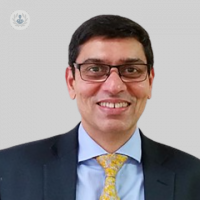Timeless beauty: The modern facelift revolution
Written in association with:In an age where appearance can significantly impact personal and professional lives, the facelift, or rhytidectomy, remains one of the most sought-after cosmetic procedures. With roots tracing back to the early 20th century, the facelift has evolved dramatically, offering more natural and long-lasting results than ever before. In his latest online article, Mr Milind Dalal gives us his insights.

Understanding the facelift
A facelift is a surgical operation aimed at minimising the visible signs of ageing on the face and neck. As we age, skin loses its elasticity, and gravity takes its toll, resulting in sagging skin, deep wrinkles, and loss of youthful contours. The primary goal of a facelift is to address these concerns, restoring a more youthful and refreshed appearance. Traditional facelifts involve incisions along the hairline, around the ears, and sometimes under the chin. The surgeon then lifts and tightens the underlying muscles and tissues, removes excess skin, and re-drapes the skin over the newly contoured face and neck. This comprehensive approach targets multiple layers of the face, ensuring durable and natural-looking results.
Advances in facelift techniques
Modern advancements in facelift techniques have significantly improved the outcomes and recovery times. One such innovation is the SMAS (superficial musculoaponeurotic system) facelift. This technique focuses on the deeper layers of facial tissue, providing a more robust and long-lasting lift. By manipulating the SMAS layer, surgeons can achieve more natural results without overstretching the skin. Another popular technique is the mini-facelift, which involves smaller incisions and is less invasive. This option is ideal for younger patients or those with mild to moderate signs of ageing. The mini-facelift offers shorter recovery time and fewer risks, making it an attractive option for those seeking subtle improvements.
The role of non-surgical alternatives
While surgical facelifts offer dramatic results, non-surgical alternatives have gained popularity for their minimal downtime and reduced risks. Procedures such as thread lifts, where temporary sutures lift the skin, and liquid facelifts, using dermal fillers to restore volume, provide temporary but noticeable enhancements. These options cater to individuals seeking less invasive ways to maintain their youthful appearance.
Recovery and results
Recovery from a facelift varies depending on the extent of the surgery and the patient's overall health. Most patients experience swelling and bruising, which typically subsides within two to three weeks. Full recovery can take several months, during which the skin adjusts to its new contours, revealing a rejuvenated and youthful appearance. The results of a facelift can be transformative, offering not just aesthetic improvements but also a boost in self-esteem and confidence. The longevity of these results varies, but with proper skincare and a healthy lifestyle, patients can enjoy their youthful look for many years.
Mr Milind Dalal is an esteemed plastic surgeon. You can schedule an appointment with Mr Dalal on his Top Doctors profile.


